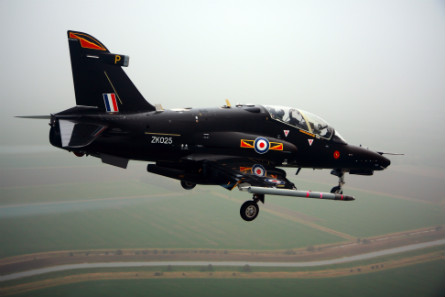The UK Royal Air Force will begin training its first students on the BAE Systems Hawk T2 on 2 April.
The first training course using the new type will include four RAF pilots who have already gained their wings after flying the Shorts Tucano T1, and will graduate in early 2013. A second intake of six students will include two personnel from the Royal Navy Fleet Air Arm, says Wg Cdr Kevin Marsh, officer commanding the RAF's 4 Sqn.
By introducing the emulated use of advanced systems including radar, electronic warfare equipment and virtual weapons, the T2 will provide an enhanced training capability when compared with the UK's legacy Hawk T1 fleet.
Synthetic radar use is supported by a Hawk-to-Hawk datalink, which Marsh says will enable the T2 to perform multi-aircraft training previously conducted only at the operational conversion unit level on types such as the Eurofighter Typhoon. "It's working and it's very good," he says of the synthetic radar capability.
 |
|---|
© Paul Heasman Assigned to the RAF's 4 Sqn, the Hawk T2 has an emulated radar and virtual weapons capability |
To be performed at RAF Valley in Anglesey, north Wales, Hawk T2 instruction will be delivered with a 50:50 balance between live flying and simulator use, Marsh told IQPC's Military Flight Training conference in London on 14 March. "We believe that the students and the training system will be up to it," he added.
With the T2 now entering frontline use, the RAF is working to establish closer links with other new-generation Hawk operators Australia, Canada and South Africa, Marsh says. The service is also starting to consider the future training demands linked to the UK's currently planned acquisition of Lockheed Martin's carrier variant F-35C, which could involve engaging with the US Navy's Boeing T-45 Goshawk operating community.
BAE has already delivered 28 Hawk 128/T2s to the RAF, with excess capacity on the fleet to potentially be offered to third-party users by the service and its Military Flying Training System industry partner, Ascent.
Source: Flight International



















